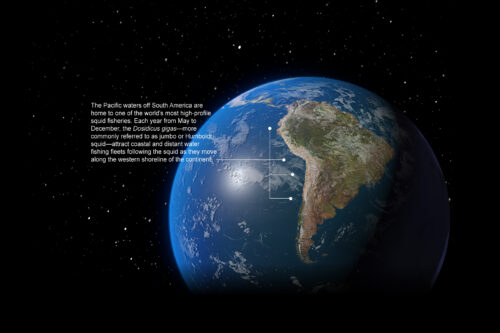Norway
Promoting ocean transparency together
Our collaboration with Norway formally began in May 2022 when the Directorate of Fisheries agreed to publish fishing data for its large vessels on the Global Fishing Watch map. With this decision, Norway reinforced its commitment to transparency, reflecting its desire to make all government data publicly available wherever possible.
Norway is the first European country to publish its vessel monitoring system (VMS) data with Global Fishing Watch. In October 2019, Norway began sharing VMS tracking information on its fisheries directorate website, updating the information on an annual basis. But the government was eager to make this data accessible to a wider range of stakeholders.
Beginning in March 2023, more than 450 Norwegian-flagged vessels have been visible on the Global Fishing Watch map. This includes vessels currently required to be fitted with VMS devices, which cover those longer than 15 meters operating globally and those longer than 12 meters that operate in specific protected areas.
With a coastline of more than 51,500 miles, including fjords and islands, Norway is one of the world’s leading nations in marine fisheries and aquaculture production. The main capture species include herring, cod, capelin, mackerel, saithe, blue whiting and haddock.
The fisheries sector has always played a key social and economic role in the country. Currently, the fishing industry is the second largest contributor to Norway’s economy and directly employs more than 30,000 workers.

Sharing fishing vessel data
since March 2023

450+
monitored vessels

51,500 miles
coastline
How we support Norway
Our collaboration is focused on amplifying Norway’s transparent approach to data by improving accessibility to its vessel tracking information and visualizing it on our publicly available map. Our shared goal is to support international scientific research and create a strong understanding of the fishing activity taking place throughout Norway’s waters.
The partnership between Norway and Global Fishing Watch seeks to promote transparency through the establishment of a collaborative framework for the use of VMS data and the associated Registry of Fishing Vessels maintained by the country’s Directorate of Fisheries.
“We believe that improved transparency of fishing data is necessary to reduce the risk of illegal fisheries and set the groundwork for improved compliance,”
Thord Monsen, head of monitoring, control and surveillance at the Directorate of Fisheries.
“Wild living marine resources are a common good and belong to everyone. When a commercial fishing fleet is licensed to utilize this common good, we are obliged and committed to share fisheries data documenting the environmental footprint of commercial fishing activity. We hope that others will follow this approach and share more fisheries data.”
Frank Bakke-Jensen, director general of the Directorate of Fisheries in Norway.
Recent work

Asia-Pacific Economic Cooperation is a Powerful Forum for Boosting Transparency to Combat Illegal, Unreported and Unregulated Fishing
APEC members share marine resources across a single ocean basin. Ensuring sustainable exploitation and trade is a shared concern. The Asia-Pacific Economic Cooperation, or APEC, is an intergovernmental forum for 21 member economies in the

Squid Smarts: 5 Things You Need to Know about Jumbo Squid Fishing in the Southeast Pacific Ocean
An analysis of the 2020 squid season reveals key players and true scope of fishing activity The jumbo flying squid (Dosidicus gigas), commonly referred to as Humboldt squid, is the most abundant cephalopod species in


Leadership in Fisheries Management Will Help Bring Transparency to Latin American Waters
Costa Rica and Ecuador will join the Global Fishing Watch platform, furthering accountability of fishing activity in the region A new era of transparency in fisheries management is emerging in Latin America. Since 2018, Peru,